International History, 1870-1939
for Cambridge International AS Level History
Third edition with Digital access COURSEBOOK
John Etty & Patrick Walsh-Atkins

















Third edition with Digital access COURSEBOOK
John Etty & Patrick Walsh-Atkins
















This suite of resources supports learners and teachers following the Cambridge International AS Level History syllabuses (9489/9981/9982). The components in the series are designed to work together and help learners develop the necessary knowledge and skills for studying History.











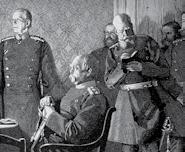


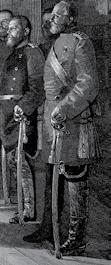















The Coursebooks are designed for learners to use in class with guidance from the teacher. One of the Coursebooks offers coverage of European Option: Modern Europe, 1774-1924 and the other offers coverage of International option: International history, 1870–1939 of the Cambridge International AS Level History syllabus. Each chapter contains in-depth explanations, definitions and a variety of activities and questions to engage learners and develop their historical skills.

The Teacher’s Resource is the foundation of this series. It offers inspiring ideas about how to teach this course including teaching notes, how to avoid common misconceptions, suggestions for differentiation, formative assessment and language support, answers and extra materials such as worksheets and historical sources.
This book contains a number of features to help you in your study.
Each chapter begins with Key questions that briefly set out the topics you should understand once you have completed the chapter.
The timeline at the start of each chapter provides a visual guide to the key events which happened during the years covered by the topic.
Getting started activities will help you think what you already know about the topic of the chapter.
Activities are a mixture of individual, pair and group tasks to help you develop your skills and practise applying your understanding of a topic. Some activities use sources to help you practise your skills in analysis.
Key terms are important terms in the topic you are learning. They are highlighted in bold where they first appear in the text, and definitions are given in the Key terms boxes. All of the key terms are included in the glossary at the end of the book.
Key concept boxes contain questions that help you develop a conceptual understanding of History, start to make judgements based on your knowledge and understanding, and think about how the different topics you study are connected.
Key figure boxes highlight important historical figures that you need to remember, and briefly explain what makes them a key figure.
Reflection boxes give you the opportunity to think about how you approach certain activities, and how you might improve this in the future.
These questions, written by the authors, help you prepare for assessment by writing longer answers.
Sample answers to some of the practice questions, accompanied by notes on what works well and how they could be improved. After reading the comments, you are challenged to write a better answer to the question.
The answers and the commentary are written by the authors.
Tips are included in the Preparing for assessment chapter. These give advice on important things to remember and what to avoid doing when revising.
Each chapter ends with a checklist of the main points covered in that topic, and gives you space to think about how confident you are with these points.
You should be able to:
Needs more workAlmost thereReady to move on
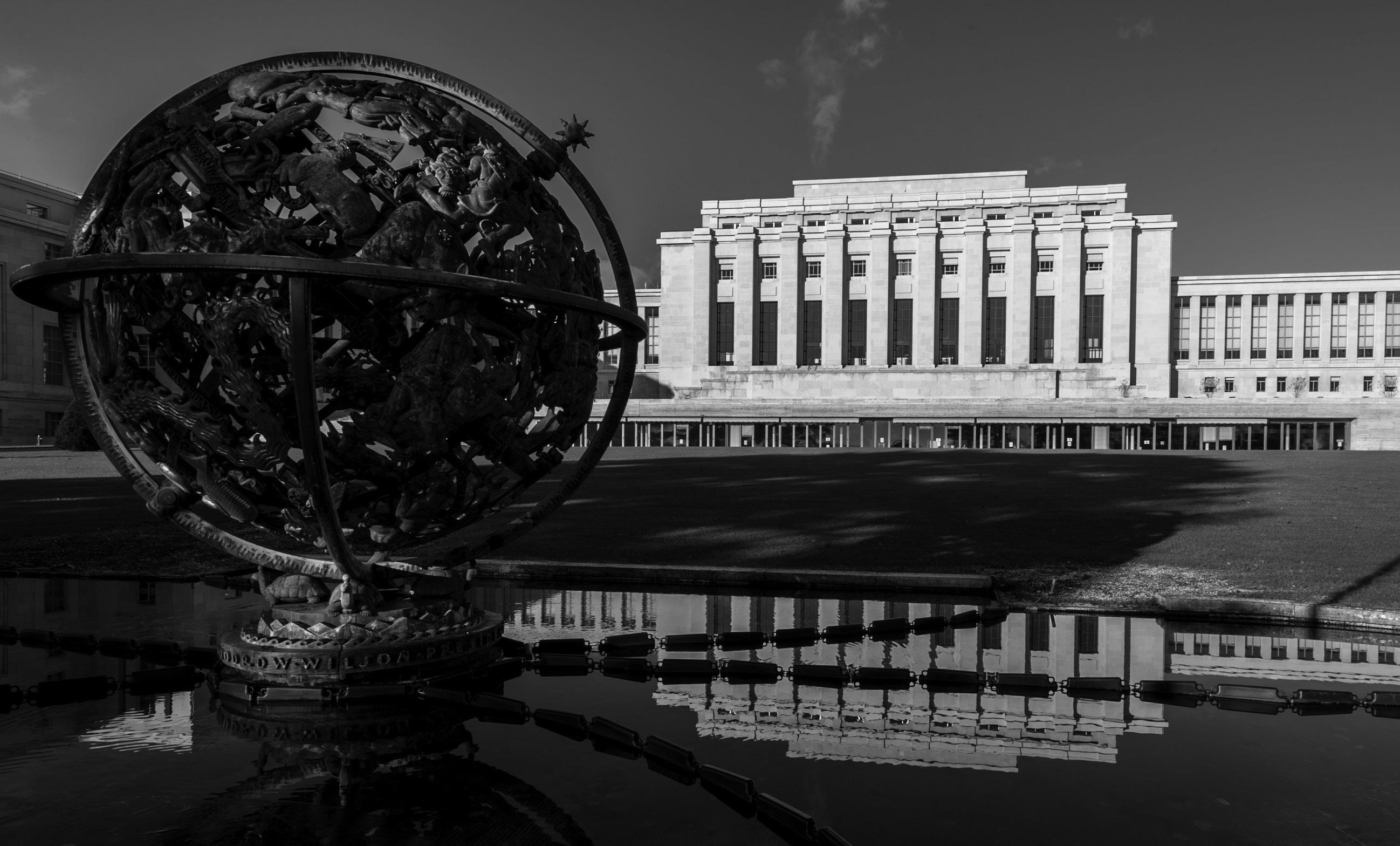
This chapter will help you to answer these questions:
• Why was there such extensive dissatisfaction with the peace settlements of 1919–1920?
• Why was the League of Nations created, and what challenges did it face in the 1920s?
• How and why did international tensions remain high after the Versailles settlement?
• How and why did international relations improve from 1924 to 1929?
This chapter has been cut part way through for sampling purposes
2.4 How and why did international relations improve from 1924 to 1929?
After 1924, there was a general relaxation in tension and the period saw an improvement in international relations. There were several serious attempts to resolve disputes, and reduce the likelihood of conflict.
At the beginning of 1924, international relations remained extremely tense, particularly in Europe. European nations were struggling with the economic problems resulting from the First World War, and these nations were more divided than united. Border disputes continued to break out as countries challenged the decisions made at the Paris Peace Conference. French and Belgian soldiers were still occupying German territory in the Ruhr.
The economies of the major European nations had been devastated by the First World War. In addition to physical damage, some countries had lost their export markets, mainly to the USA and Japan. The enormous costs of fighting a war had resulted in high taxation, extensive foreign borrowing and rising inflation. To finance the war effort, countries had left the gold standard, a system by which countries agreed to convert paper money into a fixed amount of gold. Leaving the gold standard enabled these countries to print more paper money, but had the serious effect of weakening the value of their currencies, leading to inflation.
Gold standard: A monetary system where a country’s currency or paper money has a value directly linked to gold.
increasingly willing to invest money again. Members of the public were willing to lend money to governments that offered guaranteed interest rates. In 1925, Britain returned to the gold standard. France did the same in 1926 and Italy in 1927. By 1928, virtually all of the world’s nations had returned to the gold standard. This led to an increase in international trade. Economic confidence was gradually restored, employment rose, poverty decreased, and social problems declined.
In the USA, as in Europe, the ending of the First World War had initially led to a period of high inflation and rising unemployment. Nevertheless, the USA had emerged from the war as the world’s leading economy, with its industries and infrastructure undamaged. The USA had gained new markets, and the demand for war material had encouraged it to increase manufacturing production and efficiency.
The USA also benefited when its former European allies repaid their war debts. The USA experienced an economic boom, indicated by a massive rise in consumerism. New factories were built in the 1920s and mass-produced cars, radios, vacuum cleaners and refrigerators at prices many could afford, as prices dropped, and real wages increased.
Despite its outward commitment to a policy of isolationism, the USA played a significant role in easing international tensions during the 1920s. Its vast financial resources helped to overcome the problem of German reparations, and consequently led to an improvement in relations between France and Germany.
Consumerism: Where the focus of the economy is on the interests of consumers (ordinary citizens), that is, on producing things which improve the quality of life of individuals, as opposed to producing things like tanks or battleships.
However, the economies of European nations began to recover slowly as they adapted to peacetime conditions. Realising that private businesses would be unable to finance the reconstruction of infrastructure and industry, governments took the lead. For example, both France and Britain appointed ministers of reconstruction to encourage the process. Financial constraints severely hindered the work of these ministers, but gradually economic confidence was restored. Businessmen were
Dawes Plan and its impact on international relations
By 1924, it had become more important than ever to find a solution to the problem of German reparations. There were three main issues:
• French and Belgian troops were occupying German territory. This was effectively an act of war which posed a clear threat to peace in Europe.
• Germany claimed that it was unable to make the reparation payments that the Treaty of Versailles required.
• The USA continued to insist on full repayment of the loans it had made to Britain and France during the war, but Britain and France argued that they could only afford to repay these debts if they received reparation payments from Germany.
To address these problems, a conference was held in London during 1924. The chairman of this conference was the American banker, Charles Dawes. Representatives from the USA, Britain, France, Italy and Belgium attended the conference. The League of Nations played no part in it. The plan that emerged from this conference is known as the Dawes Plan. The Dawes Plan had four main parts:
• It was agreed that French and Belgian troops should withdraw from the Ruhr as quickly as possible, and that the region should be returned to full German control. This would help Germany’s economic recovery. However, France and Belgium would continue to receive reparations from Germany.
• Germany’s reparation payments were restructured. Although the total amount Germany would have to pay was not reduced, it was agreed that its annual payments would be restricted to what ‘she could reasonably afford’.
• It was agreed that Germany’s national bank, the Reichsbank, should be restructured and supervised by representatives of the other countries attending the conference.
Stresemann and German recovery
Gustav Stresemann was one of the leading politicians of the Weimar Republic. Although he was chancellor for only three months in 1923, his work was central in ensuring economic recovery. As foreign minister, he did much to improve relations with Germany’s former enemies and restore Germany’s position as a major European power.
Gustav Stresemann (1878–1929)
Stresemann was chancellor of Germany in 1923 and foreign secretary from 1924 to 1929. He played a key role in the German economic recovery in the 1920s and in the rehabilitation (restoration) of Germany in international affairs.

Stresemann played a vital role in ending the occupation of the Ruhr by France and Belgium, stabilising German currency and ending inflation. His work restored confidence in the Weimar system of government as well as in the German economy. Investment increased and employment improved.
• Germany received a sizeable foreign loan, mainly from the USA. The loan was intended to stabilise the German economy so that Germany would be able to meet its reparations requirements in the future. These reparations would enable countries such as Britain, who had borrowed large sums from America to fund the war, to repay the Americans. The Dawes Plan seemed to mark a significant change in French policy towards Germany. Previously, France had adopted a hardline attitude, insisting that Germany paid reparations on time and in full. France’s approach had been one of the main reasons for the failure of the Genoa Conference and the French occupation of the Ruhr (see Section 2.3). The new French willingness to compromise opened the way for further negotiations designed to reduce tensions between France and Germany. However, much depended on the willingness of America to make substantial loans to Europe.
However, there were still weaknesses in the German economy. For example, it depended heavily on US loans, and there was both an adverse balance of payments and a budget deficit. Those weaknesses became clear when the economic crisis happened in 1929.
Balance of payments: the difference between the money coming into a country and the money going out of it. An adverse balance of payments occurs when a country pays out more money to import goods and services than it brings in by exporting goods and services.
Budget deficit: When a government is paying more money to run the country than it is receiving in taxes.
Perhaps Stresemann’s greatest success lay in the field of foreign policy. His main hope was to achieve a revision of the Treaty of Versailles in Germany’s favour. He helped Germany develop a working relationship with its former enemies and he was active in revising the terms of the treaty through the Young Plan, the Treaty of Locarno and the Kellogg–Briand Pact (see the section ‘The Kellogg–Briand Pact (1928–1929)’). Stresemann also played an important part in easing reparations and re-establishing Germany’s position as a major, and respectable, European power.
Perhaps one of Stresemann’s greatest achievements was to gain membership of the League of Nations for Germany. Stresemann negotiated Germany’s entry to the League as part of a wider treaty at Locarno in 1925 (see the section ‘Locarno Treaties (1925)’). In fact, as well as becoming a member, Germany was given a seat on the Council of the League, which enabled Germany to play a dominant role in making League policy.
Germany’s entry into the League of Nations was a clear signal to other nations that Germany was now accepted as a ‘respectable’ nation, with the same status as powers such as Britain and France. Many people saw this as a major step forward in reducing the tension in Europe. However, it also enabled Germany to advance its plans to revise the Treaty of Versailles relating to the east of Germany.
The Young Plan was inspired by the USA. Despite the Dawes Plan, the USA knew that once Germany had made its full annual reparations payments to Britain and France, it would not be able to afford its interest payments on US loans. As a result, a committee met in Paris to discuss the possibility of reducing the figure that had been agreed for reparations immediately after the peace talks. The chairman of the committee was an American, Owen Young, who had worked on the Dawes Plan.
established were dismantled. These were significant steps for Germany and went a long way towards easing tension across Europe.
The Young Plan was probably the best example of France’s apparent new willingness to compromise. By 1929, the French appreciated that continuing to insist on full reparations would leave France isolated and less secure. Also, both Britain and France realised that Germany would only be able to pay reparations if it received American loans. This situation meant that Britain and France had to agree with the Young Plan.
Negotiations were not easy, especially as the Germans added new demands, including the return of the Polish Corridor and Upper Silesia to Germany. Stresemann took every opportunity to try to revise the Treaty of Versailles. However, the outcome of these negotiations throughout 1928 and 1929 was the Young Plan that reduced the final sum of German reparations from £6.6 billion to £2 billion. Reducing the amount was an admission that the figure set in 1921 was too high and unrealistic. In addition, the international controls over the German economy that the Dawes Plan had
The final details of the Young Plan were resolved in a series of conferences at the Hague (known overall as the Hague Conference) in 1929–1930. As part of the Young Plan, the Hague Conference finally dealt with the issue of French military occupation of the Rhineland, ending it five years earlier than laid down in Versailles. It was hoped that the Young Plan would settle the reparations issue for good. However, a major economic crisis in the USA after 1929 made it unlikely that the USA would be able to continue to play a major role in Europe’s finances.
Source A
While some in the German Nationalist Party see the Young Plan as something designed to ‘enslave the German people’ and were determined to defeat it in the Reichstag as there was no rejection of the war guilt clause as part of the process, more moderate views have risen to the fore. The real benefit of the Plan was that it would ensure the withdrawal from the Rhineland and freeing Germany from that provision of the Treaty. Germany would be free to put her economy in order. With the reductions in reparations and much better management of the economy and taxation by the present government there should not be an issue there. A short-term American loan would also improve the payments to Britain, France and Belgium. There will be a time when foreign governments cease to impose these terrible burdens on the German people, and we will see this Plan merely as another step on the process of ending the mutilated ‘peace’ of Versailles.
From an article by the President of the Reichsbank who negotiated the Young Plan on the part of Germany, 1930
Our Plan achieved much. Germany’s debts have been massively reduced. They went from onethird to one-quarter of what they were under the Dawes Plan. That was a great reduction. We got all foreign control out of Germany. Nobody wants a foreign controller in their country, that was great too. We put Germany on her own. All the atmosphere of war and the machinery of the hated Versailles have disappeared. The next thing is the amount of burden put upon Germany. Lots of newspapers say that we still have put on Germany a much greater burden then she can bear. That is nonsense. The British and the French have got huge national debts because of the War, the Germans have hardly any. The depreciation of the mark has wiped it out. The Germans will owe America some money for a while, not pleasant, but quite bearable.
An extract from an article by a member of the American team who negotiated the Young Plan, 1931
a Compare the two views of the Young Plan and its impact on Germany.
b Look at the provenance of the two sources, the authors, their positions and the dates of publication. Why might you question the reliability of what they wrote? Why might their views have particular value to a historian?
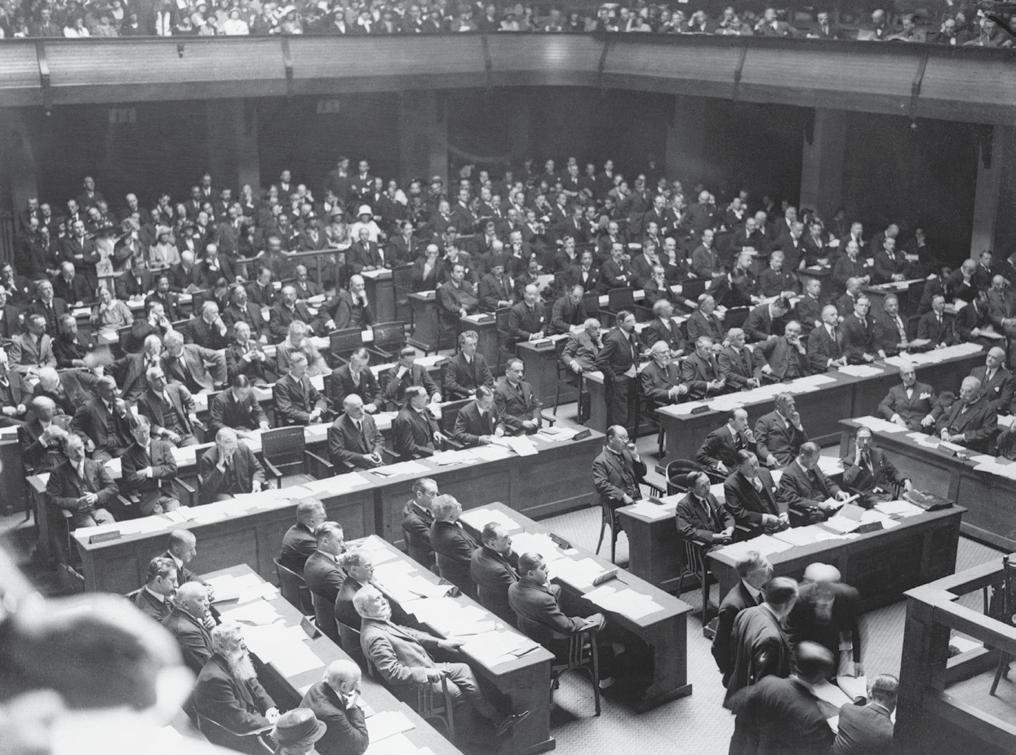
Geneva Protocol (1924): support and opposition
One unfortunate failure was the Geneva Protocol of 1924. The prime minister of Great Britain, MacDonald, proposed this plan, with French support. MacDonald had been a pacifist (someone who believes in peace and is unwilling to fight) and had refused to fight in the First World War. The Geneva Protocol was a highly idealistic plan. Its aim was that all future disputes between nations would be dealt with by the League of Nations Permanent Court of Justice (See Section 2.2). The rulings of the Court would be final. All nations collectively would have to enforce these rulings, by sanctions or by force, if necessary. The proposal meant that one nation might have to send soldiers to fight in a dispute, even if it did not affect it in any way. The intention was to encourage disarmament and increase security for nations. It would add real power and authority to the League of Nations.
With a background of economic recovery and increasing political and social stability in much of Europe in the later 1920s, serious attempts were made both to solve some of the problems left by the peace treaties, and to put into practice some of the ideals that the League of Nations represented (Figure 2.25). Some attempts at problem solving, such as the Locarno Treaties, were successful (at least in the short term), while those that attempted to put the ideals of the League’s Covenant into practice, such as the Geneva Protocol, had limited success.
Protocol: A written proposal which, if agreed by all nations, would become a binding agreement.
Although it passed the Assembly when it was first proposed, the Geneva Protocol failed the following year. Playing a large part in the opposition was the new British foreign secretary, whose party had replaced MacDonald’s in power at the end of 1924. Nations were not prepared to give up their right to act in their own interests, if they saw fit. The fact that Russia, Germany and the USA were not in the League made it probably unworkable as well.
The resort of Locarno in Switzerland was the setting for a series of agreements designed to improve stability and security in Europe. The original idea of holding the Locarno Conference came from Gustav Stresemann, the German foreign minister, who wanted to restore German prestige and privileges as a leading European nation. To achieve this, he was willing to accept some of Germany’s losses in the Treaty of Versailles.
The most significant outcome of the Locarno Conference was that Germany, France and Belgium promised to respect their joint frontiers. This agreement meant that these borders in the west, agreed at the Paris Peace Conference, were jointly confirmed and accepted. Germany, France and Belgium could not take military action unless it was purely defensive.
In addition, a Treaty of Mutual Guarantee was agreed. This treaty stated that Britain and Italy would assist any country that suffered an act of aggression in violation of the Locarno Treaties. This meant that Britain promised to help France if Germany attacked it. So, the agreement finally gave the French some of the security they had wanted for so long.
Mussolini’s aggressive actions in Fiume and Corfu during 1923 (see Section 2.3) had caused concern across Europe. At Locarno, Mussolini adopted a more cautious and diplomatic approach, creating good working relationships with representatives from Britain, France, Germany and Belgium. Despite his ambitious foreign policy aims, Mussolini recognised that in the 1920s, economically or militarily, Italy could not challenge the major European powers, Britain and France. He also realised that as Italy was the only fascist nation and had a reputation for aggressive foreign policies, it was in danger of becoming isolated. In the 1920s, being isolated made a nation vulnerable. Mussolini played an important role in achieving the agreements reached at Locarno, and other European nations felt they could safely negotiate with him as a statesman. His involvement was a sign that Mussolini’s Italy was being accepted by the other leading European nations as a major power. Even if Italy was not yet either ‘great’ or ‘feared’, as Mussolini hoped, at least it was ‘respected’.
Aristide Briand (1862–1932)
Aristide Briand was a leading French statesman in the 1920s. He was prime minister several times in the early 1920s and foreign secretary from 1926 to 1932. Briand was always determined to make the new international system work, both for France and in the interests of peace.
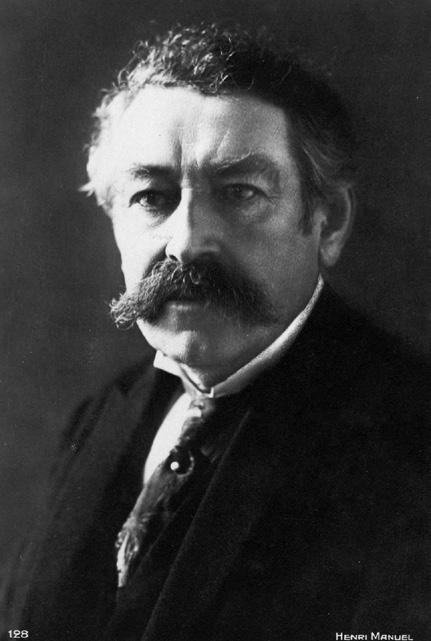
To emphasise Germany’s good intentions towards France, Stresemann accepted the permanent loss of Alsace, Lorraine, Eupen and Malmédy. In doing this, he hoped that Germany’s former enemies would give their assurances of no further attacks such as the invasion of the Ruhr. Germany promised that the Rhineland, the area nearest France, would remain demilitarised–in other words, that it would not place its own troops there. This was extremely important to France. The talks also enabled Germany to be accepted as a member of the League of Nations in 1926.
The treaties were greeted with relief and enthusiasm across Europe. One British politician suggested that while ‘The Great War ended in 1918, the Great Peace did not begin until 1925’. The three foreign ministers who negotiated them, Chamberlain of Britain, Briand of France and Stresemann of Germany, were awarded the prestigious Nobel Peace Prize.
The Locarno Conference seemed to mark a major turning point in international affairs, symbolised by the effective working relationship that had developed between Stresemann and Aristide Briand, the French foreign minister.
In some areas, the Locarno Treaties were a real success. Germany was now restored to equality with the other major powers, and it was clear that Germany was negotiating with Britain and France to maintain peace in Europe. Germany was now a member of the League of Nations and could play a role in resolving further disputes, and (it was hoped) in upholding the Covenant of the League. The borders between France and Germany, and between Belgium and Germany were guaranteed. Mussolini seemed to be playing a more responsible role in European international relations than previously. There was a widespread feeling in Europe
that tensions had relaxed, and that the Locarno Treaties were a reason for optimism.
However, the Locarno Conference did not achieve lasting success. Stresemann was able to hide his strong revisionist aims. Although he guaranteed Germany’s western boundary, he made no promise about Germany’s eastern borders. He was still determined to overturn the Treaty of Versailles in the east, and Germany’s entry to the League and seat on the Council put him in a strong position to do that. France and Britain were only interested in the western boundary guarantee and appeared unconcerned about what happened to the east of Germany. This apparent concession to Germany over the eastern borders angered several of the new nations in eastern Europe, such as Poland and Czechoslovakia, who felt threatened by it. This anger weakened the chances that these countries might ally with France to limit German expansion.
German public opinion was against the Locarno Treaties. Many Germans felt that Stresemann had made too many concessions. German resentment led to the growth of strongly nationalistic and increasingly aggressive political parties in Germany.
In addition, the treaties were negotiated independently of the League of Nations. Many people felt that this weakened the League. The organisation set up to keep the peace had played no part in what some people saw as a major step towards peace.
Look carefully at the Dawes Plan and the Locarno Treaties. Draw up a table for each with two columns. For each table, in one column write down points which identify the benefits to international relations. In the other, write down possible criticisms or failings.
Did either the Dawes Plan or the Locarno Treaty do anything more than just bring some shortterm gains? Did either bring any real long-term benefits? Should one be seen as much more important than the other?
Source A

B
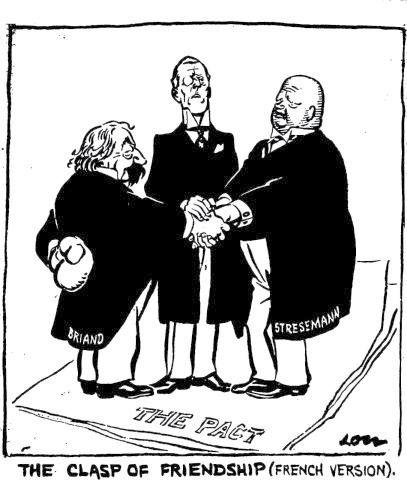
left to right–Briand, Austen
Study the two cartoons, by a British cartoonist, on the Locarno Treaties.
a In Source A, who does ‘Europa’ represent?
b In Source A, what is the link between Dawes, Locar no and Disarmament?
c In Source B, why has the cartoonist shown the three characters standing on pieces of paper?
d In Source B, what is the cartoonist suggesting about Briand’s attitude to the treaties?
e In Source B, what is the cartoonist suggesting about Chamberlain’s role in the treaties?
f To what extent is the cartoonist making a different point about the treaties in the two cartoons?
The Kellogg–Briand Pact (1928–1929)
In the 1920s, The Kellogg–Briand Pact was another attempt to reduce international tension and achieve some of the hopes of the peacemakers of 1919. The pact was the work of the long-serving French foreign minister, Briand.
Despite the Locarno agreements, the French still felt insecure. In 1927, Briand proposed a pact between France and the USA to outlaw war altogether. United States President Calvin Coolidge and Frank Kellogg (the US Secretary of State, who was in charge of foreign affairs) initially opposed the idea. Coolidge belonged to the Republican party that had opposed Wilson’s Treaty of Versailles and the USA’s membership of the League. Coolidge and Kellogg were concerned that such an agreement might force the USA to intervene, if France was threatened. However, the USA did not wish to seem opposed to international peace, so it agreed to be involved. This was on the condition that all other major nations took part, too, and that any agreement would not result in direct American commitment.
the pact, nations renounced war and agreed to settle disputes by peaceful means. For France, the pact appeared to provide protection from future German aggression. For Germany, the USSR and Japan, the pact offered international recognition as equal and trustworthy partners. Britain saw the pact as another way of preserving international peace and stability, separate from the League of Nations. All countries agreed on the aim of having no more wars and settling disputes peacefully.
The pact did not indicate what steps might be taken against any country that broke the agreement. The USA only signed the pact on condition that the USA retained the right to self-defence and would not have to act against any nation that broke the agreement. It was easy for Kellogg to sign the pact as the USA made no formal commitment and retained its isolationist policy. In practice, the Kellogg–Briand Pact was worthless.

Hague Conference (1929) and the dispute over evacuation of the Rhineland
The result was the Kellogg–Briand Pact of 1928, which was subsequently signed by over 60 nations, including the USA, France, Britain, the USSR, Germany, Italy and Japan. The Kellogg–Briand Pact officially came into effect on 24 July 1929 (Figure 2.28). By signing
The Hague Conference finalised the details of the Young Plan (see section ‘Young Plan’), and ended French occupation of the Rhineland five years earlier than had been planned under the Treaty of Versailles. All French troops were evacuated (taken away). Despite its success in these areas, the Conference revealed that France and Britain still disagreed over many issues,
and that Germany continued to feel anger at the remaining reparations and some of the terms of Versailles. Nevertheless, the Hague Conference was a good example of how nations could work together to solve major problems.
The agreements reached in the period 1924–1929, significantly improved relations between the major powers. However, underlying tensions remained.
Both Stresemann and Briand had been leaders of their countries before becoming foreign ministers. Both men played an important part in achieving a working relationship between their countries and dealing with the problems that remained after 1924, including the issue of reparations. Both men faced serious domestic challenges to their apparently conciliatory policies towards each other’s country. Many people in France disliked making any concessions to Germany. Many people in Germany hated the Treaty of Versailles and wanted to destroy all the terms it had imposed on Germany.
France’s new spirit of cooperation with Germany was clearly reflected in the Locarno Treaties, the Kellogg–Briand Pact and the Young Plan, which were largely due to the influence of Briand. However, Briand ensured that French security was always emphasised because, like many in France, he remained suspicious of German intentions. Briand continued the policy started with the ‘Little Entente’ of 1921, signing further treaties, with Romania in 1926 and Yugoslavia in 1927, that resulted in a network of alliances in eastern Europe. Briand also strongly encouraged the development of an effective League of Nations. Neither strategy was particularly effective. France’s ‘Little Entente’ partners were relatively weak, and it soon became clear that the League of Nations only had the power to enforce its decisions on minor issues.
negotiations over the Dawes and Young Plans, which were very beneficial to Germany. He managed to avoid giving any promises that Germany’s eastern borders could not be changed.
Both Briand and Stresemann were awarded the Nobel Peace Prize for their work at Locarno for helping the cause of peace. Possibly, Stresemann deserved it less than Briand. A determinedly revisionist Germany grew in strength.
Arguably, Stresemann was both more dominant and more successful than Briand. He played a key role in enabling Germany to take a more critical part in international relations by gaining membership of both the League and its Council. He was able to pursue a clearly revisionist policy and reduce reparations at the same time. Stresemann was a central figure in the
Working in pairs, draw up a plan for the question ‘Stresemann did more harm than good to international relations between 1924 and 1929’. How far do you agree?
Identify areas where Stresemann did ‘harm’ and then ‘good’ and think carefully about what those two words mean in the context of the period. Make sure each factor you identify, for example the Locarno Treaty, fits into one of the two categories and that you can explain it. Try to reach a firm judgement, so that you can then argue a good case for it.
How did you decide which case was the stronger one? What criteria did you use to base your conclusion on? Think about any difficulties that you faced in trying to weigh up the two arguments. How did you ensure that you reached a balanced judgement?
Italy and the impact of Mussolini’s ambitions on international relations
One country seemed to threaten the prospect of peace in Europe. By 1929 Mussolini had become a dictator in Italy. He was encouraging aggressive nationalism as his foreign policy. When he was trying to gain power in Italy in the early 1920s, Mussolini had become popular by promising to revise the Treaty of Versailles in Italy’s favour. He had presented the treaty as a ‘mutilated peace’ which had not given Italy the rewards it deserved. Mussolini’s aggressive tendencies had become clear in the Fiume and Corfu affairs and in his hostility to some of the principles of the Covenant of the League of Nations.
Mussolini appeared as a European statesman in his work on the Locarno Treaty, but by the late 1920s he was clearly trying to widen his appeal to the Italian people. He did all he could to increase the Italian army and navy–this was not in the spirit of the League, or of keeping the peace. He made aggressive speeches stating that the Mediterranean ought to be ‘an Italian sea’, and these speeches worried the British, who had colonies in the Mediterranean. Mussolini also had territorial ambitions towards Yugoslavia and Albania. He began to increase Italy’s control over Libya, which the British felt might threaten their control over the important Suez Canal. He wanted to expand the Italian Empire in East Africa.
While France remained sympathetic to Mussolini’s ambitions (as they were always looking for support against Germany), Britain and countries that wanted to uphold the Covenant, were less sympathetic. However, by the end of 1920s, it was mainly talk on Mussolini’s part and no action.
The USSR remained largely isolated throughout the 1920s, while the Bolshevik regime established itself in power and possible leaders struggled for supremacy. There was a major debate within Russia in this period about whether the government should focus on developing socialism within the USSR itself (a policy known as ‘socialism in one country’) or on spreading socialism in other countries. It became clear by 1929 that the focus would be on developing socialism within the USSR. This direction led to a change in attitude towards the USSR, as European countries saw the USSR as less of a threat to capitalism and democracy. However, although Britain, France and Italy had restored diplomatic relations with the USSR by 1924, these countries still feared the spread of communism. In particular, the USSR’s close relations with Germany, following the Treaty of Rapallo in 1922, caused concern across Europe.
French relations with Russia also remained tense. Although France restored formal diplomatic relations with Russia in 1924, it made little attempt to improve the relationship. France had been deeply concerned about the Treaty of Rapallo. The French believed that this treaty would increase the risk of revolution spreading from communist Russia and would also assist German economic and political recovery. French concerns increased in 1926 when Russia and Germany signed the Treaty of Berlin, extending the Rapallo agreement for a further five years.
Fear of revolution was always a major factor when European powers considered their relationship with Russia. Nevertheless, by 1929, European countries were beginning to accept that the communist regime in the USSR was there to stay, and that perhaps it was less of a threat than they had feared. There was a feeling that the time had come to permit the USSR to play a greater role in European affairs. However, by 1929, a new leader had emerged in Russia: Joseph Stalin, a ruthless dictator whose views on foreign policy had a major influence on the course of international relations in the next decade.
Joseph Stalin (1878–1953)
After the death of Lenin in 1922, Stalin started a long campaign to succeed him. By 1929 he had achieved this and he then ruled Russia as a dictator. He was probably one of the most ruthless and brutal dictators of modern times. His main concern between 1929 and 1935 was to modernise Russia and build up its economy and armed forces.

The USA also distrusted the USSR and did not establish diplomatic relations with it until 1933. The Russians themselves still resented the fact that they had not been allowed to attend the Paris Peace Conference or join the League of Nations. They increasingly saw the League as a means of preserving the international power and influence of Britain and France.
In the period from 1924 to 1929, considerable progress appeared to be made in reducing international tension. The League of Nations had been successful in settling several border disputes. France was beginning to adopt a less hardline approach towards Germany, even accepting reduced reparations payments under the Young Plan.
Germany had formally accepted at least some of the terms of the Treaty of Versailles, and the Locarno Conference seemed to symbolise a new era of friendly relations within Europe. All the major powers had renounced war by signing the Kellogg–Briand Pact–these even included the USA that had steadfastly refused to join the League of Nations.
However, there was still some progress to be made. For example, the French still deeply distrusted Germany and they had accepted the Young Plan largely because of international pressure. Tensions remained.
In 1929 in Europe, when reviewing international relations there were grounds for both optimism and pessimism. The creation of the League of Nations had provided a system for preventing war and solving disputes between nations. Some potential conflicts had been avoided, and territorial disputes settled. Problems such as reparations had been overcome. Countries had, to some extent. recovered from the terrible social and economic impact of the First World War. Autocracies had gone, and working democracies were being established. While there was still unhappiness about boundaries that had been drawn between nations in central and eastern Europe, these boundaries were gradually being accepted and made to work. The hatred between France and Germany was declining, and they were establishing a working relationship. The threats from Russia and communism seemed to be lessening as well. There was still a desire to revise the Treaty of Versailles, but there seemed to be less anger about it.
Historians study patterns of development over time, identifying and analysing areas of continuity and areas of change. Reflect carefully on the attitudes of both Britain and France towards Germany, their former enemy, in the 1920s. How much continuity of policy was there? Was there any fundamental change of policy ? If there was continuity, why did this happen? If there was change, why did it occur?
Look also at the attitudes of France, Britain and Germany towards the USSR in the 1920s. Remember that in the First World War Russia had been an ally of Britain and France, and an enemy of Germany. To what extent was there change in the attitudes of France, Britain and Germany? Was there continuity of policy?
There were also grounds for pessimism. The League had not always succeeded in solving disputes, and some weaknesses in its ability to solve problems had emerged. Several major treaties had been signed without the League’s involvement, and it was clear that nations would often put their own interests ahead of the League’s hopes of maintaining peace. Major powers such as America and Russia were still not members of the League. Liberal democracy was not making much progress in Europe, and authoritarian and aggressively nationalistic governments were emerging. Strongly nationalist political parties that disliked the idea of the League were also developing in some countries. In Europe, much depended on the willingness of able statesmen to work together to maintain the peace.
In East Asia, there were signs of growing tension. Democracy was weak in Japan and an aggressive, nationalist, expansionist militancy was growing, determined to expand out from Japan and colonise other countries. Japan was aiming to gain both China and parts of South East Asia, which had the raw materials its economy needed. Japan’s intentions worried both the British and the French, who had colonies there. The USA was also concerned and saw Japan as a threat. The USA had vast commercial interests in the region and colonial possession in the Philippines that were at risk. There were growing concerns about China’s weakness and the probability that Japan would become the dominant power in East Asia. The Washington Naval Conference had weakened the American and British navies but permitted the Japanese navy to expand. Japanese shipyards were producing a growing fleet of battleships and aircraft carriers (an important new weapon of war).
In 1929, an economic crisis occurred in America that suddenly ended the improvements in international relations. In October, the American
stock market crashed (Figure 2.29). Thousands of American citizens were financially ruined. Many banks were forced to close down as people rushed to withdraw their savings. This was the Wall Street Crash. Severe economic depression set in–first in America and then around the world. After the First World War the USA had replaced Britain as the economic powerhouse of the world, and its loans and investments were crucial to European economic health. Stock markets and prices collapsed throughout the world, and especially in Europe.
Unemployment soared in Germany, France and Britain. Poverty grew. Economic instability led to social instability, and this led to political instability. Rightwing politicians who had little time for democracy or the ideals of the League of Nations now had powerful arguments to win over voters. Democracy had failed them. International relations in Europe and East Asia changed fundamentally after 1929, and this economic crisis was a driving force behind that change.
Stock market: Where people can buy or sell shares in companies.
Economic depression: A situation when demand for goods and services drop, investment declines, prices fall, and unemployment rises.
Right wing: Strongly nationalist, anti-communist and in some cases anti-democratic. For example, right-wing German politicians in the 1920s disliked the liberal Weimar Republic and its constitution.
Consider the statement:
‘There was a real improvement in international relations between 1924 and 1929.’

Form two groups. One group should argue that there was a real improvement. The other group should argue that there was not. Each group should research the issue and prepare their argument. Make sure that you cover all areas, including East Asia and the Middle East, as well as Europe and the Americas. Be prepared to present a clear (and obviously one-sided) argument lasting no more than ten minutes. Take care to identify the points which your opponents might make against you, the Americas and think about how you can challenge them.
Read all four sources and then answer both parts of question 1.
SOURCE A
I have always been a sincere advocate of an agreement between the leading nations to set up the necessary international machinery that would bring about a practical abolition of war. But it is inadvisable to join a League of Nations that would make it necessary for the USA to maintain a standing army. This would be needed to support new and independent governments that it is intended to establish among semi-civilized people. This could involve the USA in wars in Europe, Asia and elsewhere. Rather, we should disarm the defeated nations and then follow the example by disarming ourselves. If the world is disarmed there will be no more world wars. Nations should be left entirely independent to decide their own affairs.
Letter from Senator George Norris (Republican) to an American newspaper, the Nebraska State Journal, 18 March 1918
If we must abandon the glorious ideas of peace for which this nation has always stood, we must do so with full knowledge that the alternative is wholesale preparation for war.
Public speech by Senator William G. McAdoo (Democrat), 1919.
SOURCE B
The Republicans are trying to defeat the plan for a League of Nations, which, if organised, will reduce military armament among all the great powers, and make war almost, if not, completely impossible. If the Senate destroys the League of Nations, then the USA must begin at once to arm on a greater scale than any other nation in the world, because we must be strong enough to beat all comers. This means a navy in the Atlantic big enough to overcome the combined navies of at least three European powers. It means a navy in the Pacific bigger than Japan. It means the greatest standing army we have ever had. If we want to promote human slaughter and increase taxation, we should defeat the League of Nations.

2.30: An American cartoon, published in 1919, commenting on the implications of joining League of Nations.
I am in favour of the League of Nations Covenant, of which our gallant and noble President is the proposer. I believe Mr. Wilson will be able to accomplish the fulfilment of the Covenant despite all opposition. The League of Nations idea is a very delicate matter to handle, and no-one but our President, who possesses the necessary qualities, could really be at the head of it. The abuse and discredit given to our President by the Republicans would make one imagine that these men lack intelligence. They know the Covenant is good for humanity; they should boost the League instead of criticising it. Their criticism of every move President Wilson makes implies that they are foolish or influenced by political motives.
The League of Nations will alleviate all unrest, discontent and anxiety, and will make the world safe for democracy. The League would promote commerce, civilisation and brotherly love. I sincerely hope our President sees his way clear, and happy will I be the day the Covenant is accomplished and put into operation.
Letter to an American newspaper, the Evening Public Ledger (Philadelphia), 28 March 1919
1 a Read Sources A and B.
Compare the views of Senators Norris and McAdoo on whether the USA should become a member of the League of Nations. [15 marks]
b Read all of the sources.
To what extent do Sources A to D support the view that the League of Nations would be more likely to cause wars than prevent them. [25 marks]
Answer both questions. Answer both parts of each question.
2 a Explain why the Dawes Plan was developed in 1924. [10 marks]
b ‘The Locarno Treaties of 1925 greatly reduced tension between European nations.’ How far do you agree? [20 marks]
3 a Explain why France occupied the Ruhr region of Germany in 1923. [10 marks]
b ‘The structure of the League was the main reason for its weakness.’ How far do you agree? [20 marks]
1 b Read all of the sources.
To what extent do Sources A to D support the view that the League of Nations would be more likely to cause wars than prevent them? [25 marks]
The sources do support the view to some extent that the League would cause wars, but they also make some points which suggest that they might help prevent them. On the whole, they are not really in favour of America joining the League.
This is not a very strong opening paragraph. Using phrases such as ‘to some extent’ and ‘on the whole’ and ‘not really’ suggests vagueness and indecision. You should either come up with a firmer answer–or simply get on with the analysis of the sources and leave the ‘firm’ answer to a reasoned conclusion at the end of the response.
Source A is a letter from a Republican Senator in March 1918. In it, he suggests that joining the League might be a good idea in principle–it might lead to the ‘abolition of war’. However, he also feels that it would mean that America had to keep a large army and could lead to America getting involved in wars in Europe and Asia. He suggests that a better solution would be to disarm the enemy and then America would disarm and there would be no more wars. So, the source does not entirely support the view.
This paragraph suggests some grasp of the source, with the comment about agreement in principle but that joining the League could lead to wars in practice. The response shows that the Senator is a little undecided on the point. However, there is no comment there at all about the provenance of the Source. What is the relevance of the date? There is no comment on the fact that he is a ‘Republican’–or why it is relevant that the author is a Senator. The paragraph needs an evaluation of the source and also evidence of relevant contextual knowledge.
Source B is a speech by a Democratic Senator in 1919 and clearly supports the view. While Source A suggests that joining the League will mean that America has to build up its armed forces, this source argues the opposite. He feels that if America does not join it will have to increase its army and navy, seeing a threat from Japan. He argues that a failure to join means that ‘the alternative is a wholesale preparation for war.’
As with the preceding paragraph, this paragraph shows a sound grasp of the source and there is a good choice of relevant quotes. There is a clear link back to the question and it is all relevant. However, as with the description of Source A, there is a lack of comment on the provenance of the source. There needs to be contextual knowledge (background to the date) and serious source evaluation. What is the significance of the fact that it is a public speech by a Democrat–and also a Senator?
Source C is a cartoon which is clearly very hostile to the League of Nations and does not want America to join it. The League is represented as an angry-looking man whipping the horse marked ‘peace’. The point about the ‘affairs of the world’ suggests that the League would lead to America getting more involved in world affairs which could mean being involved in wars as well.
This is slightly too descriptive of the cartoon, but the student has grasped the overall point that the cartoonist is making. There could be more explanation of the caption about the ‘cart having precedence’ and the signpost at the bottom of the cartoon. Comment about the significance of the date would help as well. The focus is descriptive rather than analytical. There needs to be more evidence of reflection on the source’s provenance and validity.
Source D is a letter to a newspaper which strongly supports President Wilson and criticises his Republican opponents. The author argues that the Covenant ‘is good for humanity’ and ‘will make the world safe for democracy.’
This is rather a brief comment which does shows a grasp of the source and has used some relevant quotes (and not just copied out large parts of the source!). However, it is not carefully linked to the question and needs a sharper focus. Again, it is descriptive and lacks evaluation and comment on the provenance. What is the value of the source? Does it make a strong point in opposing the view about causing wars?
In conclusion, some of the sources support the view, and some do not, but the support side is stronger than the other.
This is a weak ending and does little more than repeat the opening paragraph. There is no ‘right’ way to answer this sort of question. Good responses demonstrate a sustained judgement from the outset. Once you have carefully studied the sources, reflected on the provenance of all the sources, and considered of the context of each source, then, write a clear answer with broad reasons in the opening paragraph. Then, if you feel that the sources overall strongly support the view, follow that opening paragraph with full details of the sources that best support this judgement. Comment on the provenance and context of each source and fully evaluate them. Then, write another paragraph discussing sources which do not support the view, by again commenting on their provenance and context, and suggest why you feel that case is weaker. Remember that you must use and evaluate every source.
Consider the comments above, and then write your own answer to the question.
After studying this chapter, complete this table:
You should know about:
the problems the peacemakers faced in 1919 their solutions to those problems the reasons for opposition to the terms of the peace treaties the reasons for the creation of the League of Nations and the challenges it faced in the 1920s the structure and role of the League of Nations the successes of the League in the 1920s the failures of the League in the 1920s the reasons for the remaining tensions in international relations by 1929 the reasons for optimism in international relations in 1929.